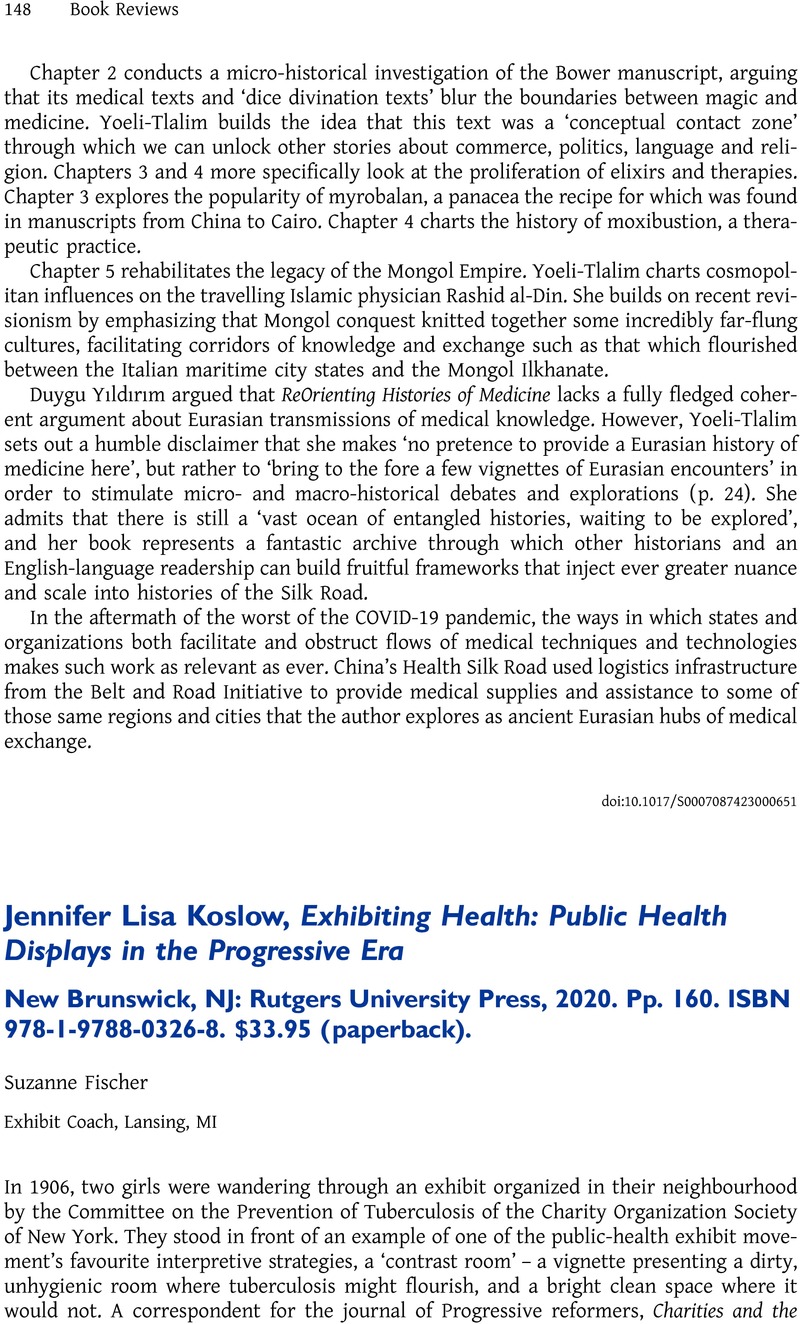No CrossRef data available.
Article contents
Jennifer Lisa Koslow, Exhibiting Health: Public Health Displays in the Progressive Era New Brunswick, NJ: Rutgers University Press, 2020. Pp. 160. ISBN 978-1-9788-0326-8. $33.95 (paperback).
Review products
Jennifer Lisa Koslow, Exhibiting Health: Public Health Displays in the Progressive Era New Brunswick, NJ: Rutgers University Press, 2020. Pp. 160. ISBN 978-1-9788-0326-8. $33.95 (paperback).
Published online by Cambridge University Press: 08 November 2023
Abstract
An abstract is not available for this content so a preview has been provided. Please use the Get access link above for information on how to access this content.

- Type
- Book Review
- Information
- Copyright
- Copyright © The Author(s), 2023. Published by Cambridge University Press on behalf of British Society for the History of Science



